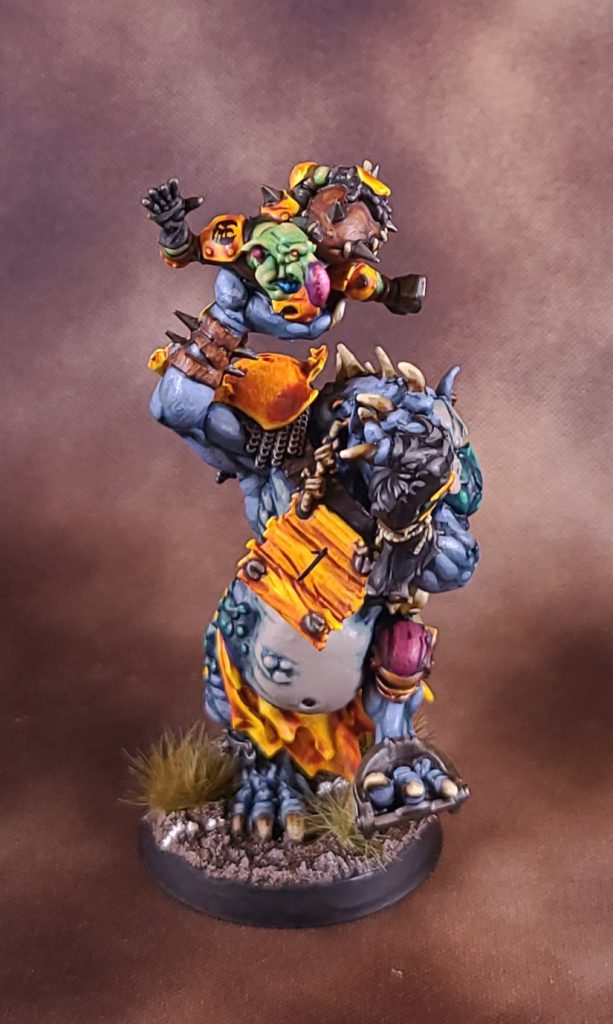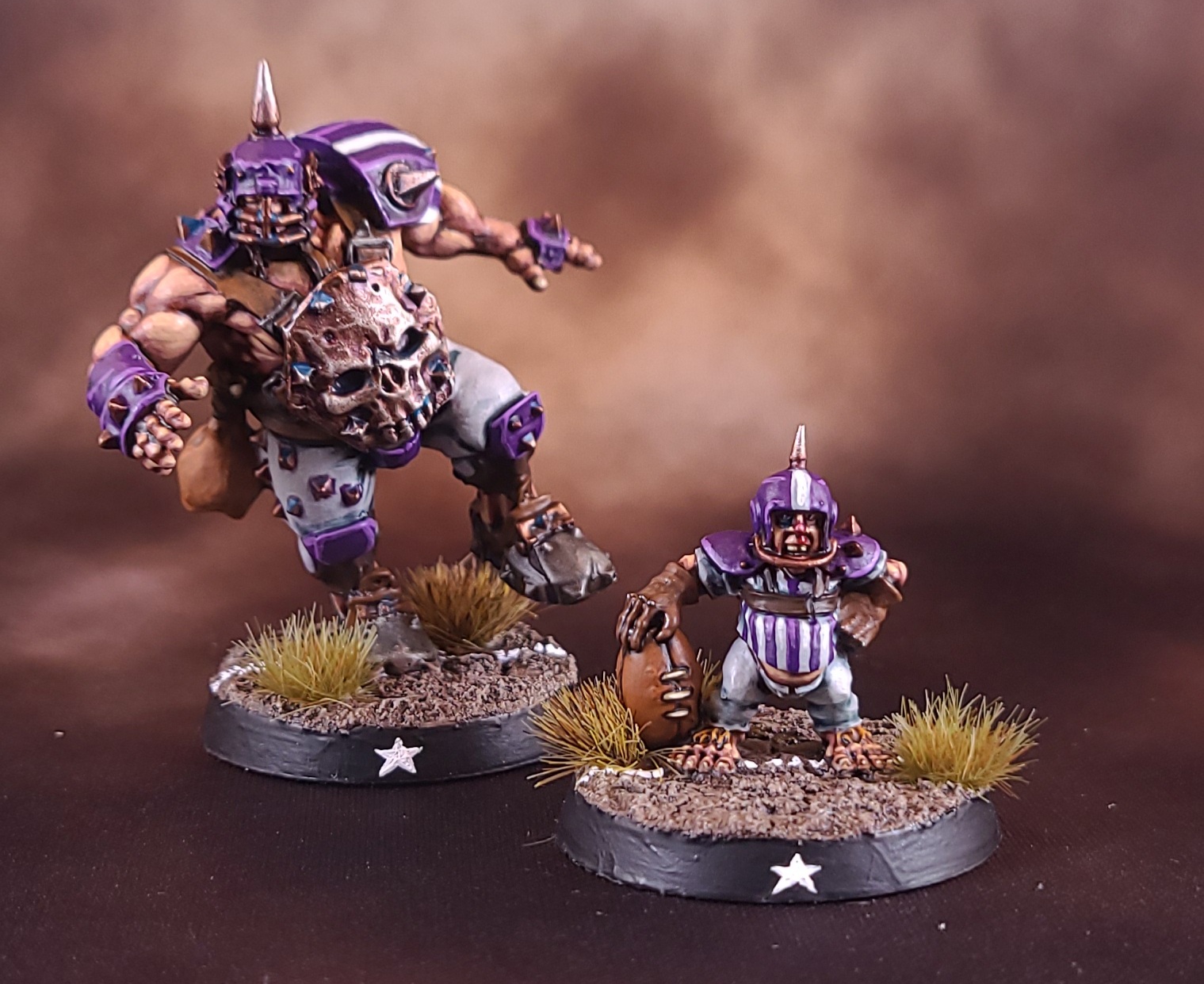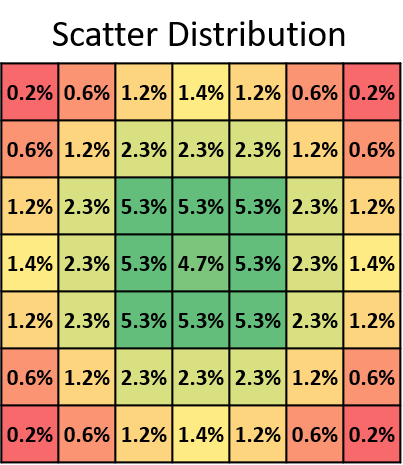This week’s Hammer of Math explores the intricacies of picking up a small teammate and throwing them as far as possible across the pitch in Blood Bowl.
In Blood Bowl, the notion of the forward pass belies a significant amount of depth. For some teams, passing is an integral and essential part of play as agile players elegantly toss balls over the heads of slack-jawed opponents. For other teams, the pass is an unthinkable act reserved for only the most desperate times. Finally, there are the teams who think outside the casualty box. The ones who understand that the concept of a pass does not necessarily need to be limited to an oblate spheroid. The ones who know that, with a strong arm and The Right Stuff, anything is possible.

In yet another example of why Blood Bowl truly is the pinnacle of gaming, players who have the Throw Team-mate trait (and at least Strength 5) can use the Throw Team-mate action to attempt to launch a player with the Right Stuff trait. While the mechanics are similar to a passing action, the results are both far more entertaining and generally more lethal. The process is simple.
- The coach of the activated model selects a target within short throw range.
- A Passing Ability test is made to determine the quality of the throw. The test has a -1 modifier if the attempt is a short throw, as well as a -1 modifier for every player Marking the thrower.
- The throw is resolved, which ideally results in at least one player getting Knocked Down.
Ogre players have access to Kick Team-mate, which enables a special action called Kick Team-mate which is similar to Throw Team-mate except that on a fumble the kicked player is automatically removed from play. Kicking a team mate does not award Star Player Points, but it also allows two players to be turned into projectiles per turn instead of just one.
Accuracy is Relative
The Throw Team-mate action always contains an element of randomness when the player is thrown. So long as the Passing Ability test does not result in a 1 (modified or not) then the player will scatter from the target square (moving a single square in one of 8 possible directions a total of 3 times). A “superb” throw occurs when the Passing Ability test is successful, while a “successful” throw is one where the Passing Ability test is failed but the result is not a 1. The chart below shows the resulting distribution of the impact, where hitting the target square only occurs 4.7% of the time and you only have a 47.1% chance of landing within one square of the target. Should the result of the Passing Ability test be a modified 1 (terrible throw) then the thrown player will deviate from the thrown player, meaning they will move D6 squares in a random direction. If the result is a natural 1 (fumbled throw) then the thrown player will simply bounce a single square in a random direction centered on the throwing player. This means that the most important factor in throwing a player isn’t the skill of the thrower, but the penalties that increase the risk of rolling a 1.
 Landing and Possibly Walking Away
Landing and Possibly Walking Away
After scattering, deviating, or bouncing their way across the field the thrown player will eventually land. If the destination square is unoccupied then the landing player will need to make an Agility test that is modified by the result of the Passing Ability test (-1 modifier if the throw was successful or fumbled, -2 if the throw was terrible) as well as a -1 modifier for every player Marking them in the target. If the thrown player passes the test then they land safely. If they fail the test then they Fall Over, but please note that the result will only be a Turnover if the thrown player was in possession of the ball. There was a 5 month period where this action always produced a Turnover, but that ruling was thankfully corrected back in November.
Where things get really fun is when the thrown player lands in an occupied square. At that point the occupying player (or “target”) is Knocked Down, the thrown player will bounce, and the process will repeat itself until the thrown player lands in an unoccupied square (at which point they will automatically Fall Down). For added lethality the coach of the throwing team is advised to use a Prone or Stunned player as their projectile; once the scatter is resolved the player will perform a final bounce that can result in further carnage.

Traits and Abilities
The three Big Guys who can throw/kick their friends are trolls, ogres, and treemen. Of the three treemen are the most reliable, with the only risk being that they can be rooted in place on a 2+ but still perform actions. Ogres and trolls need a 2+ or 4+ (for a troll with no friends) to activate, while trolls also have to pass a check to not eat their squirming projectile. This means that ogres have a 17% chance of doing nothing, while trolls will fail 31% of the time.
From a passing standpoint, the Passing Ability for Big Guys is generally a 5+. Ogre Punters are slightly more accurate at a 4+, while Treeman have the Strong Arm skill which applies a +1 modifier to the Passing Ability test roll during the Throw Team-mate action. This skill is particularly helpful because it reduces the chance of a terrible or fumbled throw.
The players with Right Stuff are Snotlings, Halflings, Goblins, and Gnoblars. All have Agility 3+ which means they’ll likely land 50% of the time. Goblin Doom Divers have the Swoop ability, which replaces the scatter roll with a Throw-in template that moves D3 squares from the target square. This makes them a little more predictable when landing… assuming they aren’t eaten first.

Wrapping Up
The mechanics behind throwing or kicking players require a bit of effort to understand, but the results are often hilarious, lethal, or both. There’s just something innately Blood Bowl about using the smallest and weakest players as projectiles, or surprising your opponent with an expertly tossed halfling who then scampers into the end zone. Sometimes all that seemingly invincible cage takes to be broken is a well tossed goblin. If you haven’t tried it yet, I recommend giving it a shot.
Thanks for reading! If you have any questions or comments feel free to drop us a note in the Comments below or email us at contact@goonhammer.com. That’s also the best way to suggest topics for future articles.




